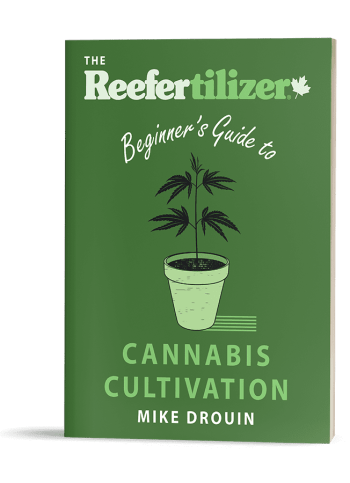White powdery mildew (WPM) is a common fungal disease that affects all kinds of plants, and is widely dreaded by cannabis growers.
Spores can hitchhike on clothes or garden tools, and can also travel through the air.
If they land on your plant’s leaves, they’ll infect your plant and prevent it from absorbing nutrients efficiently. This will weaken your plant, and eventually kill it.
WPM can hit your plant at any stage of growth, from seedlings through the flowering stage, and can devastate your whole crop if you don’t catch it and treat it quickly.
Fortunately, if you keep an eye out and act quickly, you’ll be able to prevent most cases of WPM and protect your plants if they ever get infected.
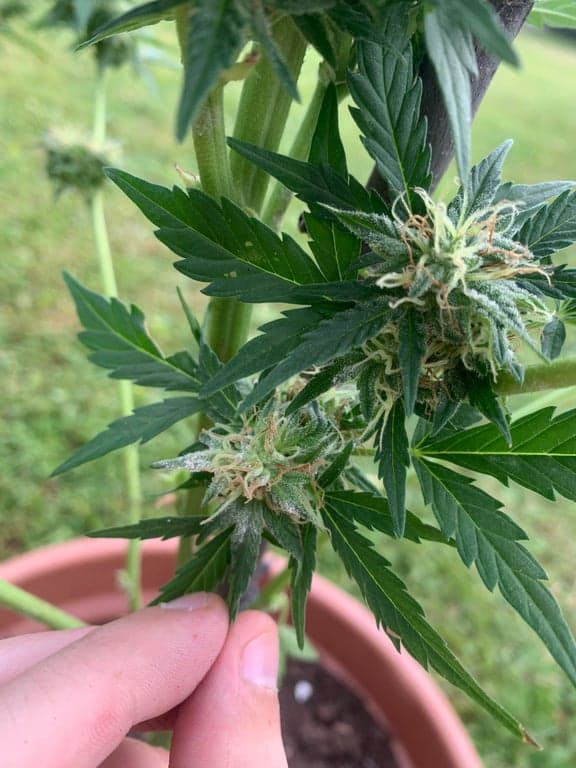

Learn to Grow Better Weed
Download our free guide to growing amazing cannabis at home.
Click Here For More Info
Identifying White Powdery Mildew


Unfortunately, WPM can be hard to spot.
You may notice white, powdery spots of residue on the leaves, stems, or branches of your plant, but WPM has a 4-7 day post-inoculation window where these patches won’t yet be visible.
Check your plants every few days for small blisters or bumps on top of the fan leaves.
These usually precede the development of the more visible white powder.
Why is WPM so bad? First of all, it can kill your plants. Beyond that, it also poses a serious health risk to anyone who plans on consuming the plant: smoking a plant that has been infected with WPM can lead to respiratory infections or lung diseases like aspergillosis.
These can be serious, or even fatal.
Preventing WPM
Once your plants are infected with WPM, it can be really difficult to control.
Since your plants are being grown for human consumption, you can’t just use fungicidal sprays to kill WPM, even though they would normally be the most effective option.
Instead, your best bet is to do everything you can to prevent a WPM infection before it happens. You should:
- Maximize air circulation. If WPM spores get into your grow area, moving air will keep them in the air and carry them back out before they can land securely on your plants and start multiplying. You should be able to see your plants’ leaves dancing gently in the breeze.
- Prune your plants. WPM likes still air and humid places, so try to take away those potential hiding places by thinning out the dark, dense areas of your plant’s canopy. Take off leaves, or whole branches – whatever it takes to make sure WPM has nowhere good to grow.
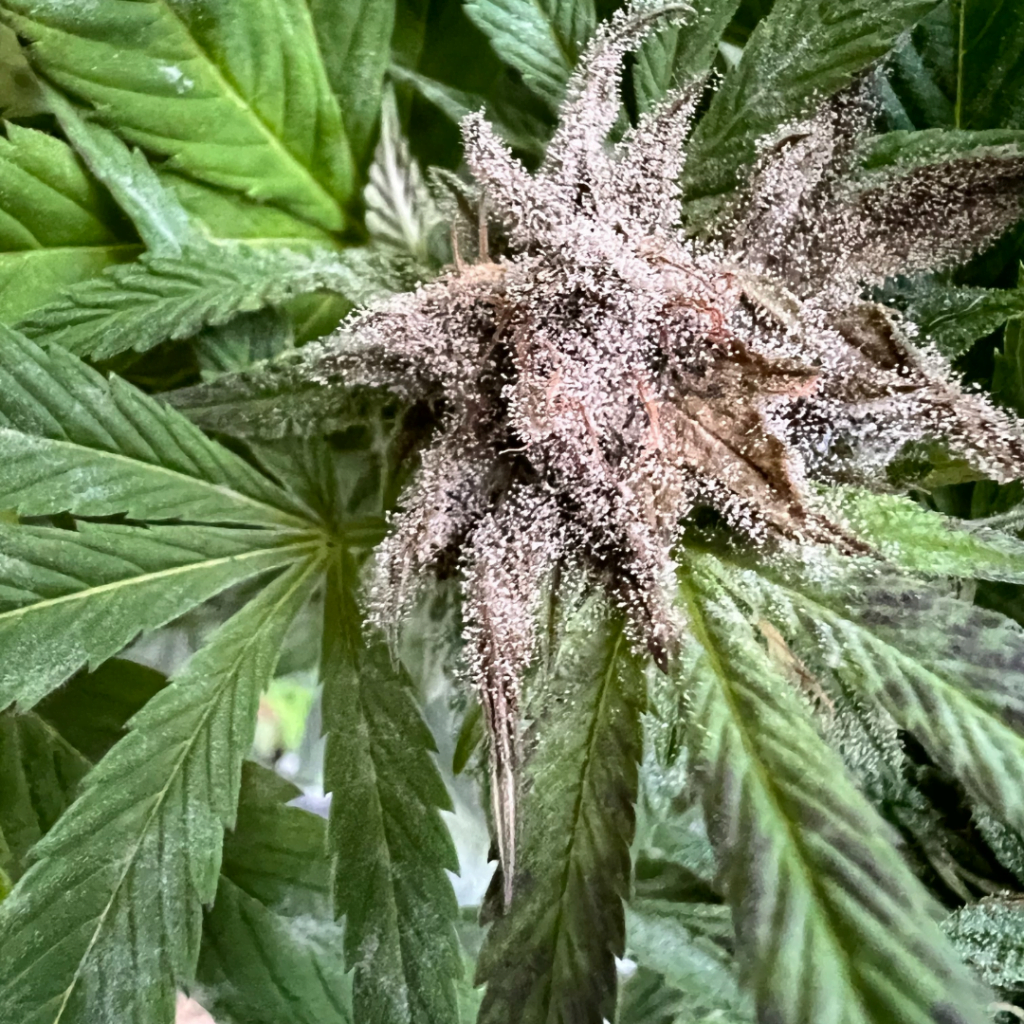

- Manage humidity. WPM likes a humidity level of 55% or higher, so try not to go much above that threshold. Buy a dehumidifier if you need to.
- Always inspect clones. When you go to plant new clones in your garden, make sure to inspect each one carefully to make sure they aren’t already infected.
Treating White Powdery Mildew On Cannabis Plants
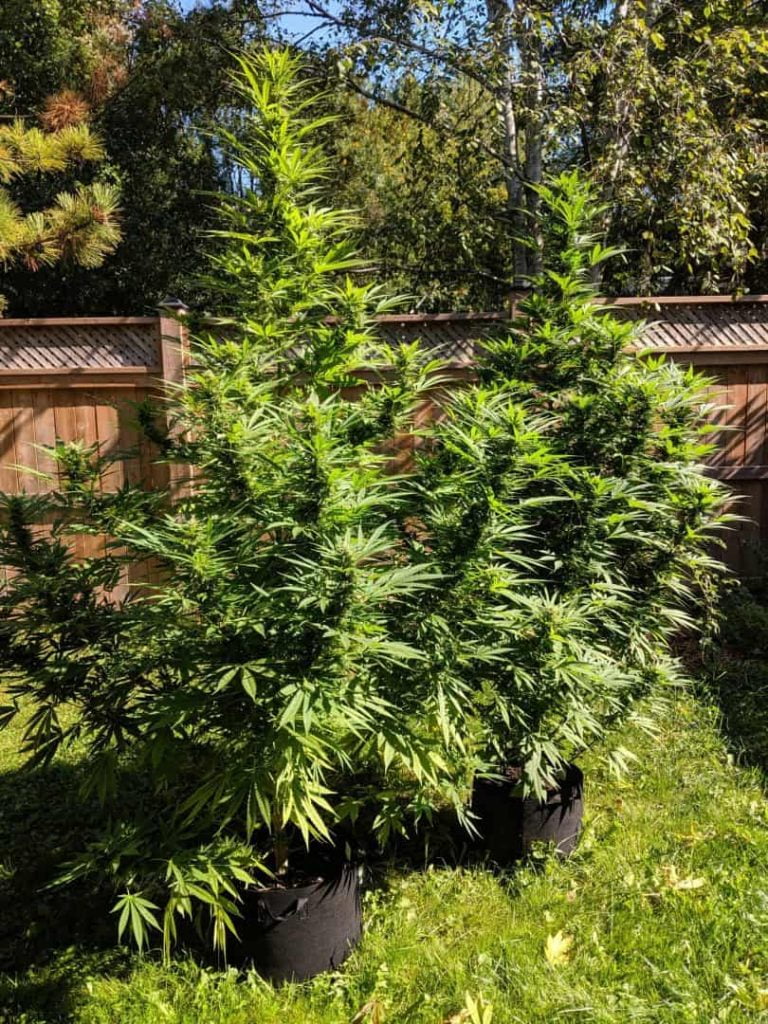

If your plants do get infected with WPM, you need to act quickly to contain the problem.
First, you’ll need to remove any (and all) affected plant parts.
Cut off any leaves, flowers, stems, branches, or even entire plants if you have to.
Remember, WPM spreads quickly, and it’s extremely important that none of it is present in the cannabis you harvest.
It may hurt to sacrifice whole plants, but it’s much better to do that than to lose your whole crop.
Remove all of the affected plant parts and gently place them inside a plastic bag, then tie it up.
Try to disturb the plants as little as possible – you don’t want to shake more spores loose to float around and infect other plants.
Once you’re done, take the trash bag far away from your plants, clean off your scissors or shears with 70% isopropyl alcohol, change your clothes, and shower.
You need to be sure you have eliminated all the traces of WPM in your garden.
Second, you can use gentle spray treatments to kill the remnants of the WPM infection.
You can make these yourself using a 1:1 ratio of 3% hydrogen peroxide solution and water, or a 1:3 mix of 70% isopropyl alcohol and water.
Just spray them all over your leaves, branches, and stems once a week, and the last traces of WPM should be killed.
Milk can also be used effectively as a fungicide and keep WPM under control.
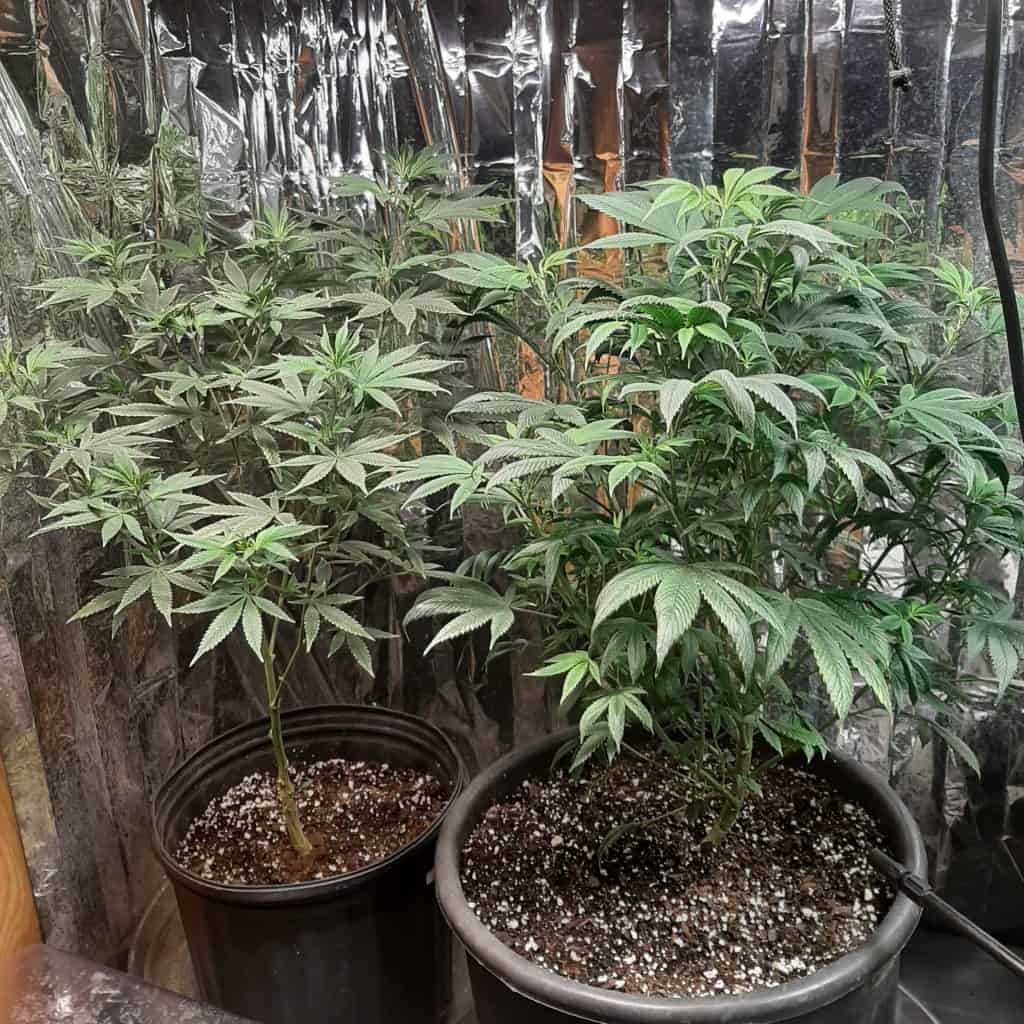

Using Milk To Treat White Powdery Mildew
Using milk to combat white powdery mildew on your plants is a budget-friendly and environmentally safe option. This mildew, a common fungal issue, can establish itself on plants, particularly under humid conditions, impeding growth and reducing your harvests.
Utilizing milk as a fungicide takes advantage of its protein content, which, under sunlight, acts as an antiseptic that combats the mildew.


Instructions For Using Milk to Fight WPM:
Prepare the Solution: Mix milk and water in a 40% to 60% ratio. Although different types of milk can be used, the reaction essential for fighting the mildew is present in all varieties.
Fill a Sprayer: Use a clean spray bottle or garden sprayer to mix and store your solution. Ensure it is well-mixed before use.
Apply the Solution: Spray the milk solution generously on your plants, covering all surfaces, preferably during a bright, sunny day. The sunlight enhances the antifungal properties of the milk.
Reapply Regularly: To maintain effectiveness, spray your plants every 10 to 14 days, continuing as long as warm and humid conditions persist. Even if signs of mildew diminish, consistent application is advised.
Observe and Adjust: Keep an eye on your plants, and if you notice enhanced health and reduced mildew, your approach is working. Adjust the frequency and concentration based on your results.
White powdery mildew spreads quickly, and it can ruin your whole crop if you aren’t careful.
Fortunately, taking precautions like only using clean, spore-free soil for indoor plants, pruning your plants, and keeping the air from getting too humid or stagnant will keep your plants from getting infected in most cases.
Keep an eye on your plants, and if you see a WPM infection beginning to spread, cut the affected plant parts out and mist the rest of the plant with alcohol or hydrogen peroxide solutions.
If you’re vigilant, you’ll be able to stop the infection before it does much damage. Happy growing!
If you want to learn even more about growing good cannabis, we offer a free 40+ page guide full of images.
Now available on Amazon.
Sign up for our newsletter and download the digital copy today!
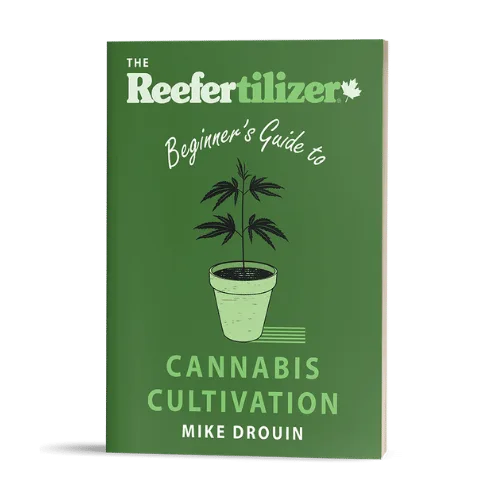

This guide will answer many questions about growing cannabis, like the following...
Selecting Seeds
Identify and Correct Problems
Maximize Yield
Much More...
Get a Chance to INSTANTLY WIN a Reefertilizer Nutrient Kit When You Sign Up.
Elijah Petty is a writer in the cannabis industry. He aims to use his platform to help educate people about cannabis and dispel some of the myths and misinformation that surround the plant.

